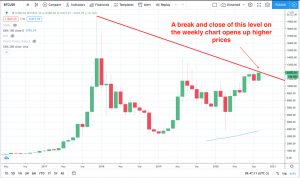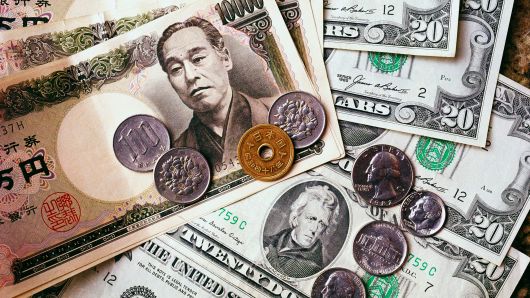Not many people will have heard Kristalina Georgieva’s recent speech, ominously titled “A New Bretton Woods Moment.” With the US election just around the corner, coronavirus cases spiking again in Europe, and Brexit still featuring heavily in the news cycle, you could be forgiven for missing it. Indeed, many people don’t even know all that much about the Bretton Woods Conference and the agreement that took place at the Mount Washington Hotel in Bretton Woods, New Hampshire between the 1st and 22nd of July, 1944.
On the final day of that conference, delegates from 44 Allied nations signed an agreement that would lead to a new post-war global monetary order in which a gold-backed US dollar assumed the role of global reserve currency, while other national currencies were pegged to it at fixed rates. It lasted until the Nixon Shock of 1971, when then President of the United States removed the convertibility of the US dollar to gold, effectively bringing the Bretton Woods era to a close. The agreement also led to the formation of the International Monetary Fund (IMF) and World Bank (originally the International Bank for Reconstruction and Development).
So, why a new Bretton Woods moment? In her address, IMF managing director, Kristalina Georgieva, discussed the consequences of the coronavirus pandemic on the global economy, calling it “an economic calamity that will make the world economy 4.4% smaller this year and strip an estimated $11 trillion of output by next year.” She also mentioned the global fiscal actions that have already been taken, amounting to some $12 trillion, as well as the fact that central banks have expanded their balance sheets by $7.5 trillion thus far. While the speech was short on specific details, she repeatedly alluded to persistent issues of low productivity, slow growth, rising inequality, and a looming climate crisis.
“We can do better than build back the pre-pandemic world. We can build forward to a world that is more resilient, sustainable, and inclusive. We must seize this new Bretton Woods moment.”
The video has sparked all manner of speculation as to what this new Bretton Woods moment could look like. Twitter goldbugs have taken the opportunity to call for a return to some form of the gold standard, despite the fact that prominent figures such as Jerome Powell have previously rejected it as a possibility.
What’s particularly noteworthy, is that on the Monday following Georgieva’s speech, the IMF published a report on Central Bank Digital Currencies (CBDCs) and Global Stable Coins (GSCs). On the same day, Powell himself attended a virtual panel discussion hosted by the IMF, ostensibly on cross-border digital payments, but more broadly on the viability of CBDCs.
During the panel, Powell stated: “We do think that it’s important to get it right than to be first… In addition to assessing the benefits—and there may well be benefits—there are also some quite difficult policy and operational questions that need to be thoroughly evaluated.”
The discussion of CBDCs is not particularly new, everyone from the Bank of International Settlements (BIS) and IMF, to the European Central Bank, Bank of England and the Philadelphia Fed, have released papers on the subject in recent years.
In his 2019 address at Jackson Hole, then Bank of England governor, Mark Carney, discussed the implications of a new “Synthetic Hegemonic Currency” that could be used between central banks. It was his belief that such a currency, backed by a basket of national currencies in a similar vein to Facebook’s proposed Libra project, could lead to more favourable outcomes than having the US dollar eventually being replaced by the Chinese Renminbi as reserve currency.
While Western leaders have been a little slow off the mark in issuing digital versions of their own currencies, the Chinese government is already piloting a public test of theirs. Earlier this month, the equivalent of $1.5 million worth of a new digital yuan was randomly distributed to 50,000 consumers to be spent at over 3,000 participating retail outlets.
Is this the shape of things to come? Is this what a new Bretton Woods moment could look like? With it seeming like much more fiscal stimulus is due to be coming down the pipe, could the widespread adoption of CBDCs allow central banks to provide direct and targeted stimulus that bypasses the banking system altogether? If so, it could lead to a complete reimagining of the division between fiscal and monetary policy. It could also be the missing piece of the puzzle leading to the efficient deployment of some form of Universal Basic Income (UBI), particularly in economies hit hardest by the pandemic.
The consequences of such a move are momentous. For instance, negative interest rates and tax deductions could be implemented directly without the need for swollen bureaucracies. Recent advances in data analysis could be used to give central banks unprecedented granularity on exactly what goes on in their respective economies, rather than relying on bank data and outmoded surveys. Using a mix of behavioural economics and the burgeoning field of cryptoeconomics, desirable behaviours could be incentivised and undesirable behaviours taxed at the source (think green new deal). Obviously, all the above also come with huge implications for privacy and that dreaded cashless society that’s been a favoured topic of conspiracy theorists for decades.
It also pays to remember that British economist, John Maynard Keynes, who was one of the architects of Bretton Woods, never actually intended the US dollar to be the world’s reserve currency. His own proposal of an International Clearing Union (ICU) and supranational currency called the Bancor was rejected by the US representatives, but will he end up having the last laugh?
It certainly seems like the race is on, with central banks, corporations and the existing cryptocurrency space all vying for a seat at the table. It would seem that bitcoin let the cat out of the bag, Libra confirmed to everyone willing to listen that it was in fact alive, and now the rest of the incumbent financial system, from top to bottom, appears to be in the early stages of adopting it.
One other immediate consequence of this means that cryptocurrencies are facing wider acceptance and are moving from ‘fringe’ investment status to a potentially new front runner on a new ‘digital currency’ age. In a crypto-positive world Bitcoin stands to gain as the ‘digital gold’. Interestingly, more and more companies are putting serious cash into Bitcoin and wider adoption will suit the price of Bitcoin especially as there are only a limited number of coins that can ever be mined. One area to keep a careful eye on is the break of this weekly trend line on the BTCUSD chart.
by Giles Coghlan, Chief Currency Analyst, HYCM













